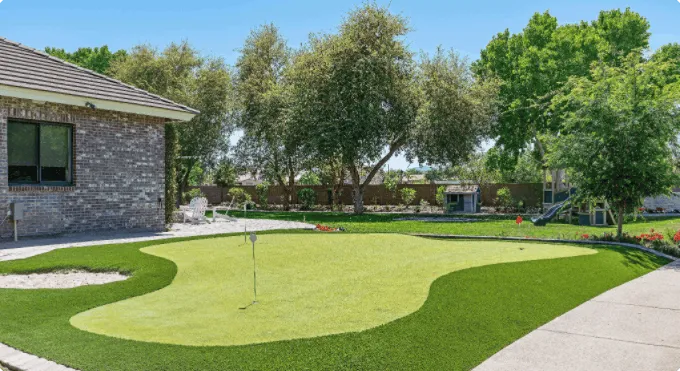
- Afrikaans
- Arabic
- Belarusian
- Bengali
- Czech
- Danish
- Dutch
- English
- Esperanto
- Estonian
- Finnish
- French
- German
- Greek
- Hindi
- Hungarian
- Icelandic
- Indonesian
- irish
- Italian
- Japanese
- kazakh
- Rwandese
- Korean
- Kyrgyz
- Lao
- Latin
- Latvian
- Malay
- Mongolian
- Myanmar
- Norwegian
- Persian
- Polish
- Portuguese
- Romanian
- Russian
- Serbian
- Spanish
- Swedish
- Tagalog
- Tajik
- Thai
- Turkish
- Turkmen
- Ukrainian
- Urdu
- Uighur
- Uzbek
- Vietnamese
Sustainable Options for Replacing Artificial Turf in Outdoor Spaces
Nov . 09, 2024 12:43 Back to list
Alternatives to Artificial Turf A Sustainable Approach to Landscaping and Sports Fields
In recent years, artificial turf has gained immense popularity in sporting venues, playgrounds, and residential landscaping due to its low maintenance and aesthetic appeal. However, concerns about environmental impact, heat retention, and potential health risks have prompted many to seek alternatives. This article explores various sustainable options available that not only enhance outdoor aesthetics but also promote ecological balance.
1. Natural Grass
The most classic alternative to artificial turf is, of course, natural grass. Natural grass provides a living, eco-friendly solution that contributes to biodiversity, air purification, and carbon sequestration. it acts as a habitat for various species, including insects and small animals. Although natural grass requires regular maintenance, including mowing, watering, and fertilizing, the advent of drought-resistant grass varieties has made sustainable landscaping more achievable. These varieties are designed to withstand dry conditions and require less water, making them an excellent choice for arid regions.
Another increasingly popular alternative is native plant landscaping. This method involves using plants that are indigenous to the area, which are better suited to the local climate and soil conditions, thus requiring less water and care. Native plants attract local wildlife, including birds and pollinators, while reducing the need for chemical fertilizers and pesticides. This method encourages a more balanced ecosystem and offers a striking visual appeal through diverse flora. By creating a garden that flourishes with native grasses, shrubs, and flowers, homeowners can significantly reduce their ecological footprint.
3. Xeriscaping
Xeriscaping is a landscaping method specifically designed for regions with limited water resources. This technique involves the use of drought-resistant plants, efficient irrigation systems, and proper soil management to minimize water consumption. Xeriscaping not only conserves water but also reduces maintenance costs and enhances biodiversity by providing habitats for local wildlife. Additionally, this approach can create beautiful and unique landscapes that are both practical and environmentally friendly.
alternatives to artificial turf

4. Gravel and Stone Landscapes
For those seeking a low-maintenance, durable landscaping option, gravel and stone landscapes can be an ideal choice. Using gravel paths, rock gardens, or stone patios can create visually appealing outdoor spaces that require minimal upkeep. Additionally, gravel allows for efficient drainage, preventing water from pooling and promoting healthy soil beneath. These surfaces can be enhanced with drought-resistant plants, combining form with function.
5. Living Roofs and Green Walls
Emerging as a modern and innovative landscaping option, living roofs and green walls utilize vegetation to create natural insulation and improve air quality. These systems are particularly beneficial in urban settings, where they can help reduce the heat island effect, promote biodiversity, and improve energy efficiency. Green roofs absorb rainwater, reducing stormwater runoff, while also providing a unique space for urban gardening.
6. Eco-Friendly Synthetic Turf Options
If synthetic materials are preferred, eco-friendly options are becoming increasingly available. Some companies now produce artificial turf made from recycled materials or biodegradable options. These alternatives address some of the environmental concerns associated with traditional artificial turf while providing similar benefits in terms of maintenance and durability.
Conclusion
While artificial turf may offer convenience, the environmental considerations and long-term impacts on health and ecology cannot be overlooked. Fortunately, a variety of alternatives exist that not only provide functional outdoor spaces but actively contribute to ecological health. By choosing natural grass, native plant landscaping, xeriscaping, gravel and stone landscapes, or innovative living roofs, individuals and communities can create beautiful, sustainable environments that align with the principles of conservation and biodiversity. Embracing these alternatives is a step toward a more sustainable future, fostering a connection to nature while enhancing the beauty of our outdoor landscapes.
-
The Benefits of Artificial Turf for Indoors
NewsJul.15,2025
-
How Artificial Grass Suppliers Ensure Quality Products
NewsJul.15,2025
-
Artificial Grass and Pets: A Space for Relaxation
NewsJul.08,2025
-
Balcony & Outdoor Decoration with Artificial Grass
NewsJul.08,2025
-
Best Indoor Artificial Grass for Home
NewsJul.07,2025
-
Best Pet Turf for Dogs: Safe & Durable Artificial Grass Options
NewsJul.07,2025
Products categories









